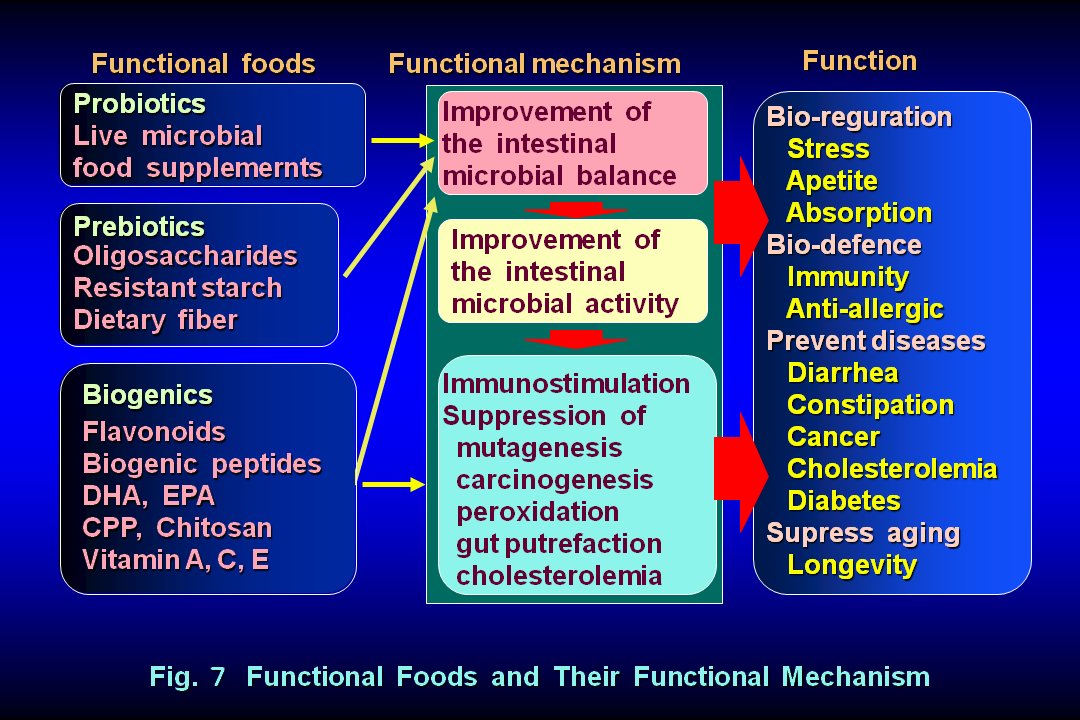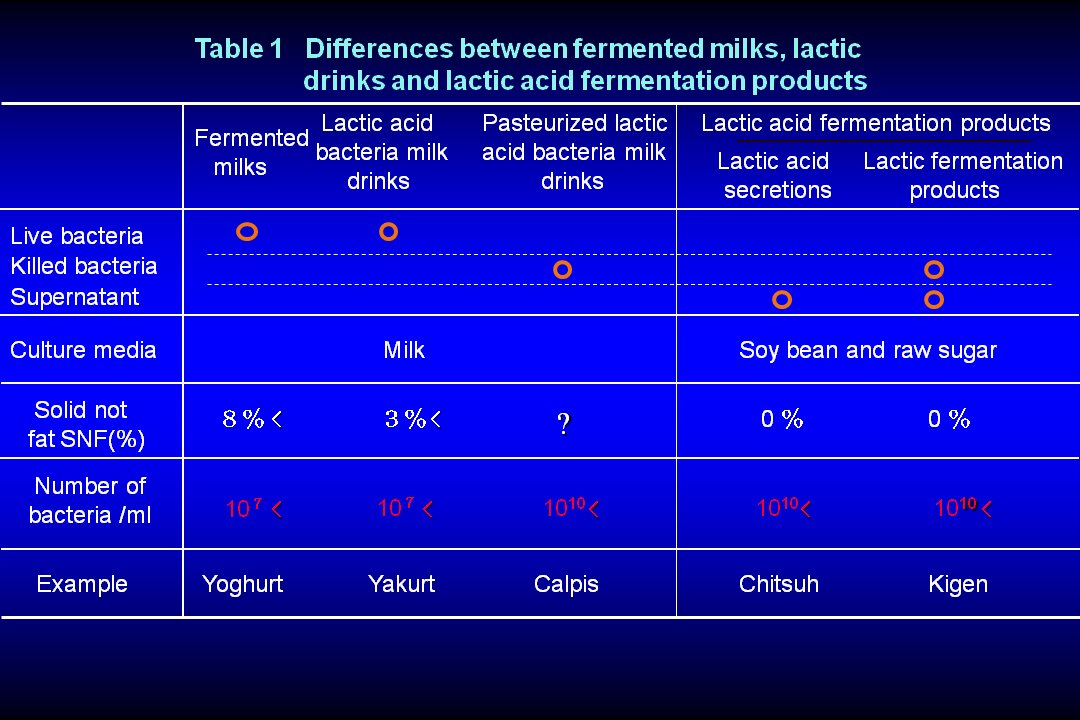Mechanism of the Action of Lactic Fermentation Products
Lactic acid bacteria products are usually manufactured by fermenting soybean culture media added raw sugar for a few days. Soybean contains isoflavone which is anti-aging substance and raw sugar contain a lot of kalium which works into neuron. Therefore, they contain not only a high concentration of microbial cellular components but also substances with excellent value.
 |
|---|
| Fig.7 |
|---|
For these reasons, lactic fermentation products are functional food. The functional foods are classified into 3 groups based on their mechanisms of action: ‘probiotics’, ‘prebiotics’ and ‘biogenics’ (Fig. 7).
Probiotics are defined as ‘live microbial food ingredients which beneficially affect the host by improving its intestinal microbial balance’. the candidates are lactic acid bacteria, bacilli, yeasts etc’.
Prebiotics are ‘non-digestible food ingredients which beneficially affect the host by selectively stimulating the growth of beneficial bacteria and/or by suppressing that those of harmful bacteria in the colon, which have the potential to improve host health: the candidate are oligosaccharides, dietary fiber, resistant starch etc’.
Biogenics are ‘food ingredients which beneficially affect the host by directly immunostimulating, suppressing mutagenesis, tumorigenesis, peroxidation, hypercholesterolemia, or intestinal putrefaction: the candidates are bioactive peptides including immune--potentiators, flavonoids, etc’. Lactic fermentation products are typical biogenics.
The Effects of Probiotics are the Function of Biogenics
Until now, most of the health effects of lactic acid bacteria contained in yogurt etc, are thought the function of viable lactic acid bacteria which reach the intestine and proliferate there, aren’t they? However, in fact, lactic acid bacteria, when taken by mouth, are neither able to proliferate nor to colonize easily in the intestine.
 |
|---|
| Fig.8 |
|---|
Then, it is not possible to explain the effectiveness of probiotics only with the effects of viable lactic acid bacteria. Here, as the effects of probiotics, the effects due to bacterial cellular components, that is biogenics, should be taken into consideration ( Fig. 8).
The action of biogenics greatly differs from that of probiotics and prebiotics; the latter indirectly act on living body by improving the intestinal flora, and former, on the other hand, does not only improve the intestinal flora, but also directly act on a living body by enhancing immunity. Cellular components of lactic acid bacteria in probiotics and biogenics stimulate intestinal immune system, irrespective of viable or dead of bacteria, resulting in produce antibody against the intestinal harmful bacteria and in increase the number of bifidobacteria in the intestine and improve the intestinal flora at the same time. In this case, the greater number of lactic acid bacteria ingested, the greater health effects are brought into play in bio-regulation (anti-stress and improving appetite), bio-defense (immuno-stimulation, anti-allergy), prevention of diseases including diarrhea, constipation, cancer, hypertension, diabetes, hypercholesterolemia, etc., as well as suppression of aging. In addition, prebiotics such as oligosaccharides promote the proliferation of bifidobacteria in the large intestine, as already stated.  |
|---|
| Table1 |
|---|
The most important function of lactic fermentation products is immuno-stimulation. That is, probiotics, biogenics and prebiotics improve the balance of the intestinal flora by enhancing the growth of bifidobacteria and/or inhibiting the growth of harmful bacteria, resulting in immuno-stimulation. Biogenics, above all, are far favored for health effect, because the number of bacteria 1000 times or more than that of probiotics as shown in Table 1.
|